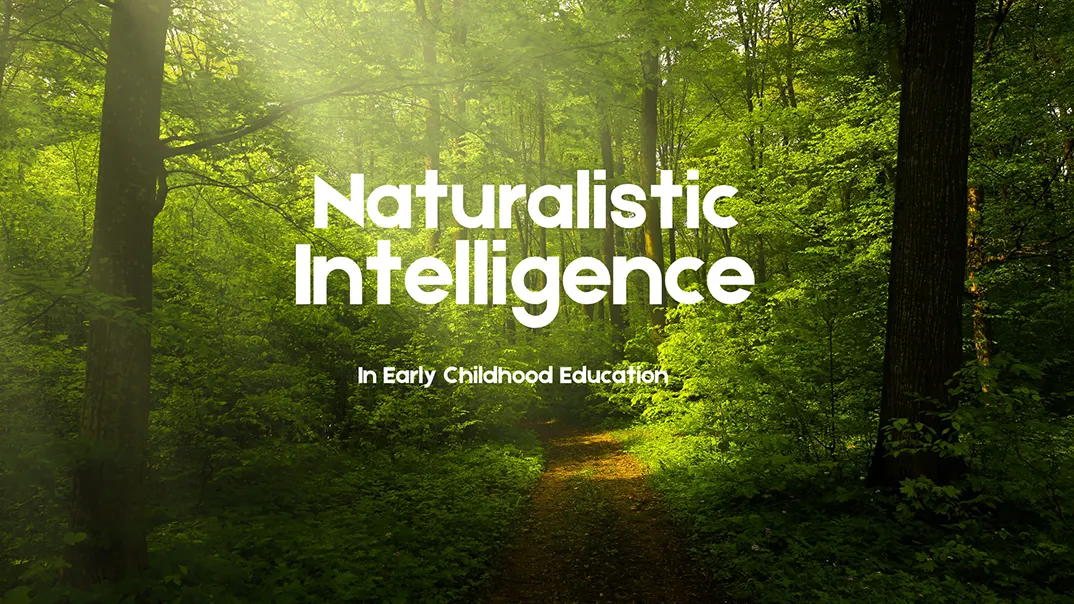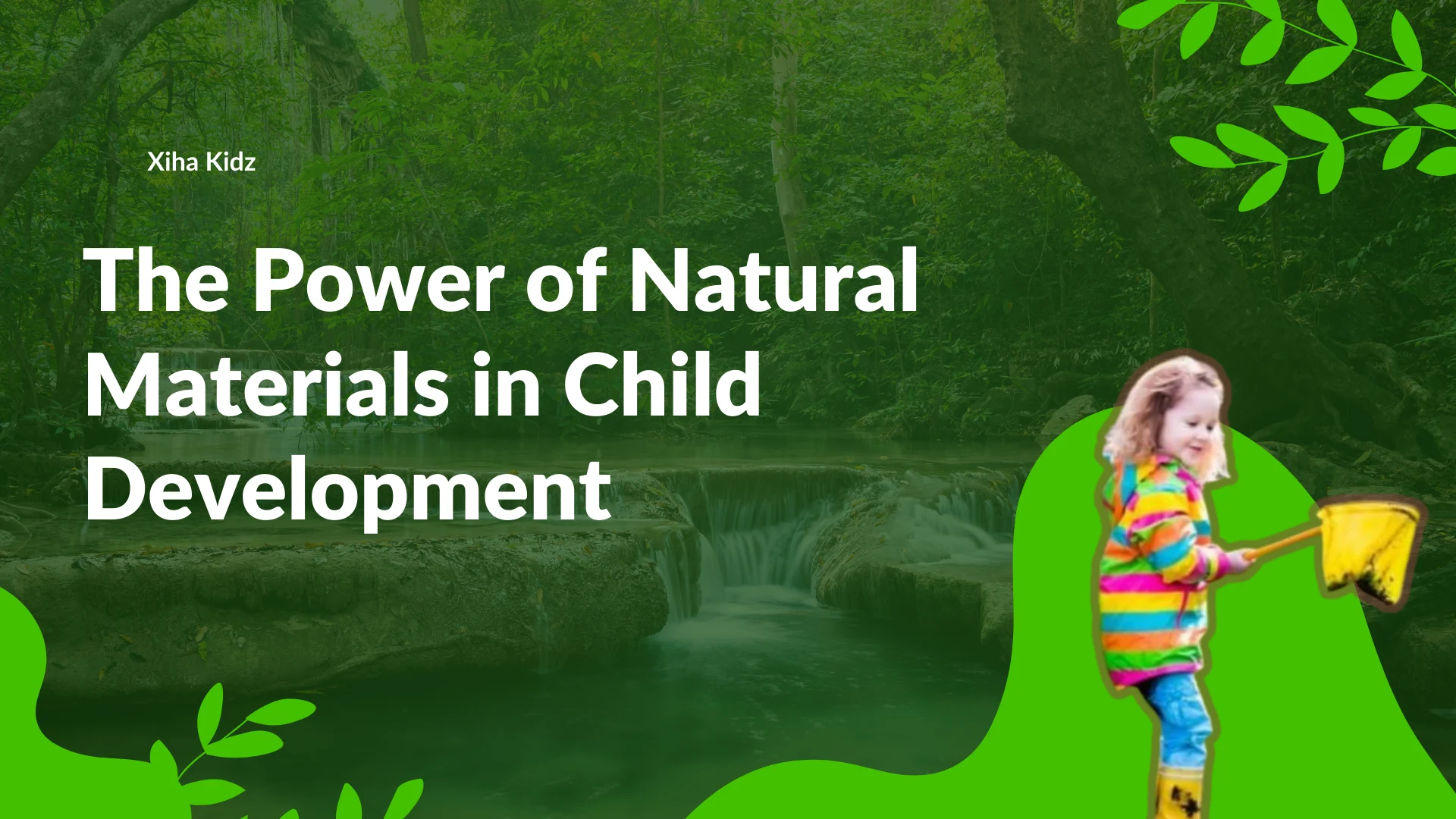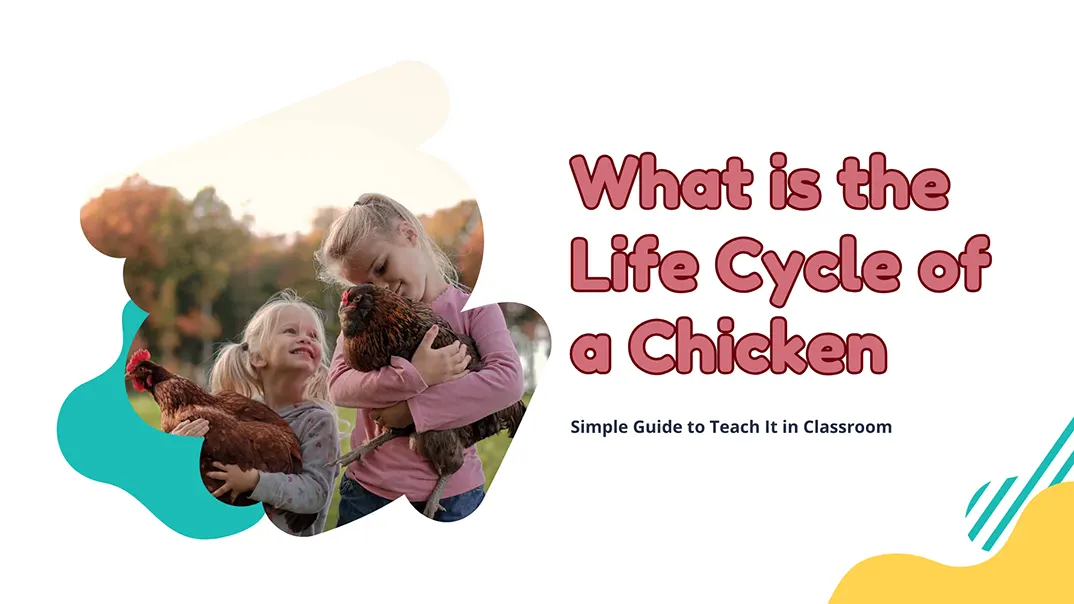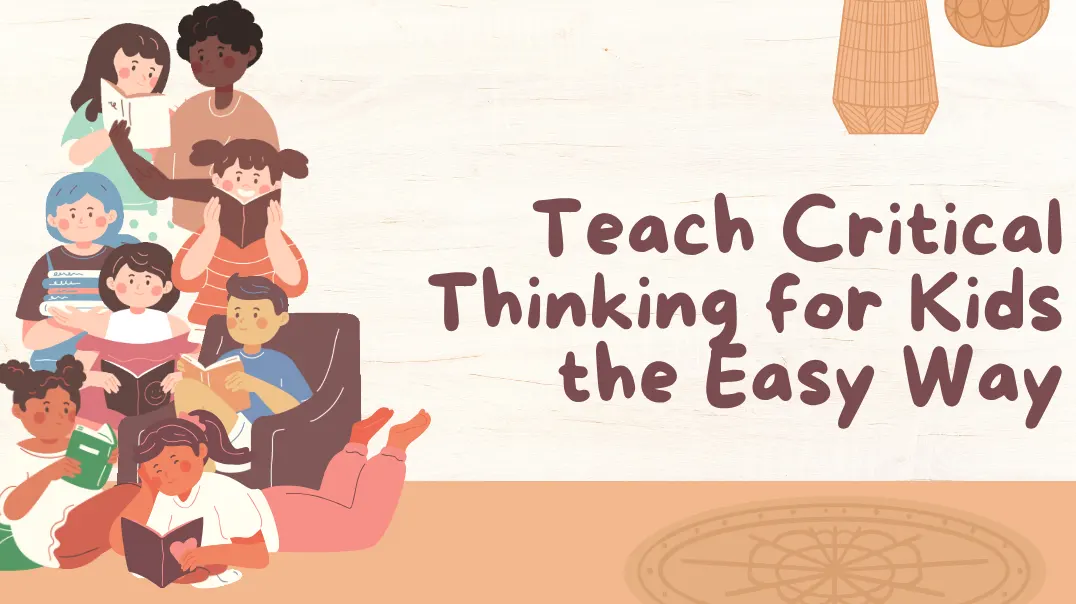Why do some children naturally connect with animals, notice subtle changes in the weather, or show a deep fascination with plants and rocks? Why do these children sometimes appear distracted or disengaged in structured indoor environments? These behaviors may be signs of naturalistic intelligence. As educators, are we missing opportunities to support these young learners by not recognizing the power of naturalistic intelligence in our classrooms?
Naturalistic intelligence is the ability to recognize, categorize, and engage with elements of the natural world. First introduced by Howard Gardner as part of his theory of multiple intelligences, this type of intelligence helps children connect with their surroundings in meaningful ways. When teachers and parents understand the value of naturalistic intelligence, they can design learning experiences that support it.
In the following sections, we’ll explore what naturalistic intelligence means, how to identify it in children, and how to nurture it through purposeful activities and nature-based learning. If you’re ready to unlock the full educational power of naturalistic intelligence, keep reading—you’re about to see nature-based learning in a whole new light.
Naturalistic Intelligence Definition and Meaning
Naturalistic intelligence refers to a person’s ability to recognize, categorize, and draw meaning from natural world features—such as plants, animals, rocks, and weather patterns. In early childhood, this intelligence often appears as a fascination with nature, a strong awareness of surroundings, and a desire to explore outdoor environments. Children with strong naturalistic intelligence are usually inquisitive, observant, and eager to interact with living things and natural materials.
Characteristics of Naturalistic Intelligence
Children with naturalistic intelligence demonstrate unique cognitive and emotional traits that set them apart. These characteristics often appear early in life and influence how children perceive, interpret, and interact with their surroundings. By identifying these traits, educators and caregivers can better understand how to nurture and support this specific type of intelligence in early childhood learning environments.
Below are the characteristics of naturalistic intelligence in young learners:
- Heightened Sensory Awareness
These children are acutely attuned to the natural world’s sights, sounds, smells, and textures. They may notice subtle differences in bird songs, leaf shapes, or animal behaviors—often long before their peers do. This sensory awareness supports environmental understanding and broader observation and analytical skills. - Strong Classification Skills
A defining feature of naturalistic intelligence is the ability to categorize and organize objects based on their natural properties. Whether sorting seashells by color, identifying different tree species, or grouping insects by habitat, these children excel in recognizing similarities, differences, and patterns in the living world. - Innate Curiosity About Nature
Children with naturalistic intelligence frequently ask questions about animals, plants, weather, and natural processes. “Why do birds fly south?” or “How do flowers grow?” are common inquiries. Their curiosity drives inquiry-based learning, often leading them to seek answers through hands-on exploration. - Empathy Toward Animals and the Environment
These children often form emotional bonds with animals and express concern for environmental well-being. They may protest if someone steps on an insect or express sadness over a tree being cut down. This empathy reflects their deep connection to the natural world and a growing sense of environmental responsibility. - Preference for Outdoor Learning Environments
Indoor settings may feel confining to children with strong naturalistic intelligence. They typically thrive when learning outside, observing nature firsthand, interacting with living organisms, and engaging in exploratory play. Outdoor learning enables them to activate their strengths fully. - Detailed Memory for Natural Phenomena
These children tend to remember the names of animals, the characteristics of plants, or specific details about ecosystems long after being exposed to them. Their memory is especially sharp when it involves nature-related topics, supporting advanced comprehension and retention in science-focused lessons. - Tendency to Create Natural Collections
It’s common for children with naturalistic intelligence to collect rocks, leaves, shells, or insects. These collections often become personal treasures and are used for sorting, comparison, or storytelling, indicating a cognitive and emotional engagement with nature. - Inclination Toward Problem-Solving Using Nature
They often engage in practical reasoning with nature-based tools and materials. For example, they might build a small dam using stones during water play or experiment with sunlight angles using mirrors. This hands-on approach reinforces spatial thinking, scientific reasoning, and creativity.
Trasforma la tua aula con soluzioni di arredamento personalizzate
Naturalist Intelligence Examples in Early Childhood

Naturalistic intelligence in young children is often evident through behaviors that may seem like simple curiosity. These children tend to notice small environmental details that others overlook. They classify, compare, explore, and express genuine interest in plants, animals, weather, and outdoor elements. Here are some common, observable examples of naturalistic intelligence in young children.
- A preschooler collects fallen leaves and carefully arranges them in color groups.
- A child shows excitement about insects, watches ants closely, and asks about their behavior.
- A student eagerly waters classroom plants and remembers details about their growth.
- A learner expresses concern for wildlife, asks to clean up litter, or creates artwork about endangered animals.
Naturalistic Intelligence in the Theory of Multiple Intelligences
Developmental psychologist Howard Gardner introduced naturalistic intelligence and proposed that intelligence is not a single, fixed ability measurable by IQ alone. Instead, he developed the Theory of Multiple Intelligences, which identifies a broader range of human potential across different domains of learning and expression.
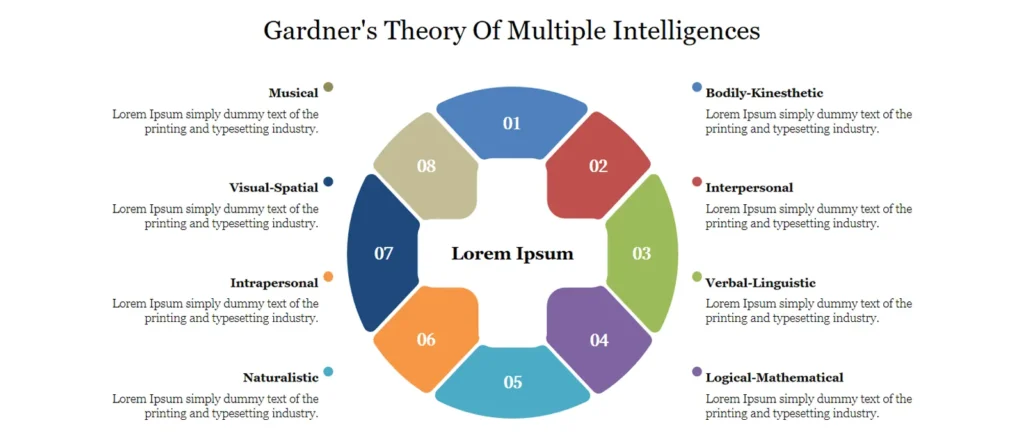
According to Gardner, the nine intelligences are:
- Linguistic Intelligence: Sensitivity to spoken and written language
- Logical-Mathematical Intelligence: Ability to analyze problems and perform mathematical operations
- Musical Intelligence: Capacity to discern pitch, rhythm, and tone
- Bodily-Kinesthetic Intelligence: Using one’s body skillfully for expression or problem-solving
- Spatial Intelligence: Ability to visualize and manipulate spatial dimensions
- Interpersonal Intelligence: Understanding and interacting effectively with others
- Intrapersonal Intelligence: Deep self-awareness and introspection
- Naturalistic Intelligence: Recognizing and categorizing elements of the natural world
- Existential Intelligence: Sensitivity to profound questions about existence and human life
Advantages of Developed Naturalistic Intelligence
When naturalistic intelligence is recognized and nurtured from an early age, children gain far more than just a love for nature. This form of intelligence supports cognitive, emotional, social, and academic development in both immediate and long-lasting ways. Below are some key advantages of developed naturalistic intelligence in early childhood.
1. Strong Observation and Analytical Skills
Children with developed naturalistic intelligence tend to notice details that others miss. Whether it’s a slight change in the environment or a pattern in animal behavior, these children learn to pay close attention and analyze what they see. This sharp observational ability improves focus and critical thinking skills across all learning areas.
2. Enhanced Scientific Thinking
Naturalistic learners often demonstrate early interest in scientific inquiry. Their tendency to question, explore, and experiment builds a strong foundation for STEM learning. From classifying leaves to understanding ecosystems, they naturally engage in processes like hypothesis-making, data collection, and evidence-based reasoning.
3. Emotional Intelligence and Empathy
Interacting with nature fosters emotional regulation and a deep sense of empathy. Children who care for plants or animals learn to be gentle, patient, and nurturing. This awareness often extends to how they treat peers and adults, making them more socially responsive and emotionally mature.
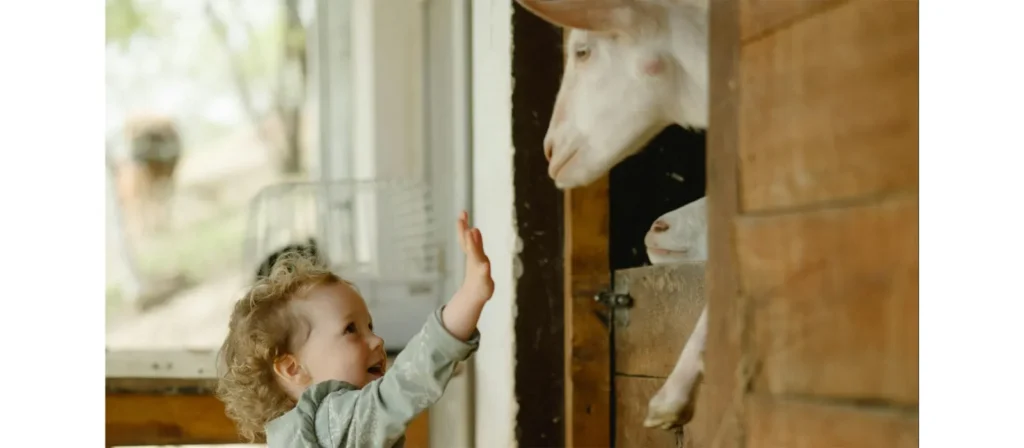
4. Environmental Awareness and Responsibility
Children with developed naturalistic intelligence are more likely to adopt eco-conscious behaviors early on. They understand the importance of recycling, conservation, and protecting habitats. This early awareness can lead to lifelong environmental responsibility and a desire to be good stewards of the planet.
5. Better Attention and Calmness
Spending time in nature and engaging in nature-based tasks reduces anxiety and improves attention spans in young children. Naturalistic intelligence supports a child’s self-regulating, focusing, and staying present—skills that benefit academic learning and behavior management.
6. Motivation for Self-Directed Learning
Naturalistic learners often follow their curiosity. They ask thoughtful questions, pursue independent investigations, and learn for understanding—not just to complete assignments. This intrinsic motivation builds confidence and encourages lifelong learning habits.
7. Multisensory Learning Integration
Children with substantial naturalistic intelligence benefit from learning through touch, smell, sight, and sound. Their connection to the physical world helps them internalize concepts more effectively, especially when lessons are tied to real-world examples. This can lead to a deeper understanding of math, science, and language arts.
Strategies to Develop Naturalist Intelligence
Developing naturalistic intelligence in early childhood requires more than just outdoor play—it involves intentional, structured, and meaningful exposure to the natural world through observation, interaction, and reflection. Below are in-depth strategies that educators and caregivers can use to effectively nurture naturalistic intelligence in young learners.

Design a Nature-Rich Learning Environment
A key starting point is to ensure that the physical learning space supports and reflects naturalistic intelligence. This means integrating natural materials—wood, plants, stones, and water features—into both indoor and outdoor areas. Classrooms should include elements like potted plants, natural light, insect viewers, or nature display tables to stimulate curiosity. Outdoors, children should have access to gardens, grassy areas, tree shade, and sensory-rich elements like sand, mud, and water.
Key Elements of a Nature-Rich Learning Space:
- Natural Materials and Toys
Replace plastic toys and artificial décor with wood, stone, metal, wool, and other organic materials. These provide rich sensory experiences and reinforce children’s connection to real-world textures and forms. - Wooden Furniture
Use child-sized tables, classroom shelves, and seating made from natural wood rather than plastic or metal. Wooden furniture adds warmth, durability, and an organic feel to the space, encouraging sensory engagement and aligning with the aesthetics of nature. It also supports sustainability and gives children a tactile connection to natural materials. - Living Plants
Include a variety of indoor plants and encourage children to care for them. Hanging plants, potted herbs, or small succulents can be used to bring life and air-purifying benefits into the classroom. Observing plant growth also reinforces responsibility and interest in biology. - Natural Light and Airflow
Whenever possible, make use of natural lighting and fresh air. Large windows, open doors, and skylights can drastically shift the mood of a space and enhance children’s awareness of time, weather, and seasonal changes. - Tactile Exploration Zones
Designate spaces where children can engage with sensory materials like sand, water, soil, leaves, and stones. These zones should encourage free play, experimentation, and the use of natural materials in imaginative ways. - Nature Observation Stations
Set up quiet corners with child-friendly tools like magnifying glasses, bug jars, feather collections, and leaf identification cards. These stations promote quiet focus and observational skill-building. - Outdoor Extensions
If you have access to an outdoor area, create spaces for digging, planting, climbing, and collecting. Include logs for sitting, tree stumps for stepping, and shaded areas for reading or quiet reflection. - Nature Displays and Collections
Create rotating displays that showcase seasonal items: pinecones in winter, blossoms in spring, leaves in autumn. Children can contribute items they find outdoors, giving them a sense of ownership and discovery. - Eco-Themed Decor
Decorate the environment with nature-inspired imagery such as landscapes, animal prints, botanical illustrations, and child-made nature art. These visuals help stimulate imagination and reinforce the beauty of the natural world.
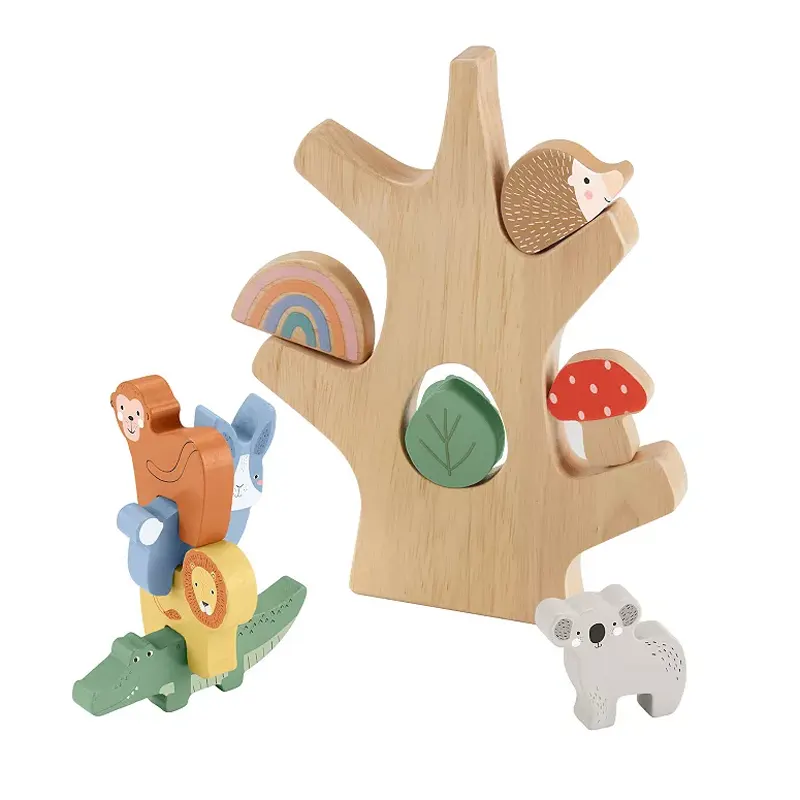


Scopri la nostra gamma completa di prodotti
Accedi al nostro catalogo completo con mobili e attrezzature da gioco di alta qualità per asili e scuole.
Establish a Routine for Outdoor Learning
Regular and consistent exposure to outdoor environments is essential. Incorporating outdoor learning into the daily schedule allows children to interact naturally with their surroundings. Educators can lead nature walks, observational games (“Who can spot three kinds of leaves?”), or quiet reflection time in a natural space. This repeated exposure helps strengthen children’s familiarity with nature and supports the development of classification, observation, and inquiry skills.
Implement Nature-Based Project Work
Project-based learning focused on natural topics is one of the most effective ways to develop naturalistic intelligence. For example, a project about birds could involve building bird feeders, observing bird behavior, learning their calls, drawing birds, and reading age-appropriate nonfiction books about avian life. These projects promote critical thinking, sustained inquiry, and a deep connection with nature over time.
Facilitate Real Gardening Experiences
Gardening with children is one of the most hands-on, immersive ways to activate naturalistic intelligence. Whether in a large school garden or small container planters, children can learn to sow seeds, water plants, track growth, and observe the life cycles of living things. Educators can enhance this with journaling, charting plant progress, or conducting experiments (e.g., “What happens if we water this plant less?”) to introduce basic scientific concepts through real observation.
Incorporate Nature into All Areas of the Curriculum
Naturalistic intelligence doesn’t belong only in science—it can enrich every subject area. Children can count petals, measure sticks, or compare leaf sizes in math. Nature-themed vocabulary, storytelling, and poetry can enhance literacy in language arts. Children can use natural materials like leaves, twigs, and stones in art to create texture-based compositions. This interdisciplinary approach reinforces the value of nature as a meaningful context for learning.
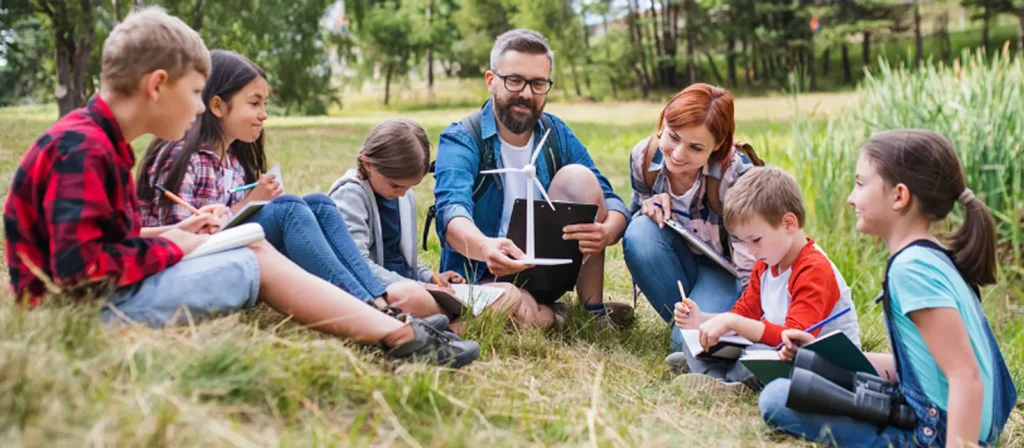
Support Observation and Documentation Skills
Observation is central to naturalistic intelligence. Provide children with magnifying glasses, bug viewers, or simple binoculars to explore natural objects up close. Then encourage them to record what they see using nature journals—drawing pictures, labeling parts of plants, or narrating experiences. This process builds early scientific thinking, expressive language, and attention to detail.
Include Animal Interactions Where Possible
Children often connect deeply with animals. Including animals in the classroom—whether through a classroom pet, visits from animal educators, or digital nature cams—fosters empathy, responsibility, and observation. Children can learn to feed, clean up after, and track the behaviors of animals, helping them understand living systems tangibly. Virtual field trips or nature documentaries can be excellent substitutes if live animals aren’t an option.
Lead Environmental Stewardship Activities
Developing naturalistic intelligence should also cultivate a sense of responsibility toward the environment. Simple actions like litter collection walks, recycling activities, or water conservation lessons can help children understand their impact on the earth. These activities give them a sense of agency and lay the foundation for sustainability-oriented values and habits.
Model Curiosity and Language About Nature
Children take cues from adults. Children are more likely to engage when teachers and caregivers model enthusiasm, use rich language, and ask thought-provoking questions about nature. Say things like, “I wonder why this tree’s leaves are a different color,” or “Look how the ants are carrying food—what do you think they’re doing?” These moments foster observation, vocabulary growth, and deeper thinking.
Use Seasonal Themes to Deepen Engagement
Children’s relationship with nature strengthens when they experience it through the lens of change. Design curriculum around seasons—observing how trees change in autumn, learning about animals that hibernate in winter, planting seeds in spring, or tracking sun and shadow in summer. Seasonal learning helps children connect to the natural world’s time, cycles, and rhythms.
Activities That Develop Naturalistic Intelligence
Children with strong naturalistic intelligence learn best through direct interaction with the natural world. The following activities are designed to engage their senses, curiosity, and observational skills—all while fostering a deeper connection to nature.

- Nature Scavenger Hunt
Give children a list of natural items to find outdoors—such as a smooth rock, a yellow leaf, a feather, or signs of animal life. This activity encourages careful observation and helps them categorize what they see, which directly supports the development of naturalistic intelligence. - Planting a Mini Garden
Let children grow their own flowers, vegetables, or herbs in a small garden bed or container. Watching plants grow over time teaches responsibility, patience, and an understanding of life cycles—key elements of naturalistic learning. - Bug Observation Station
Set up a small observation area using magnifying glasses, jars (with holes), and bug identification cards. Encourage children to watch insects closely, describe their movements, and compare different species. This hands-on activity enhances their classification and inquiry skills. - Nature Journaling
Provide children with notebooks to draw or write about their daily outdoor discoveries. Whether it’s sketching a bird, noting changes in the weather, or describing leaf textures, nature journaling strengthens attention to detail and reinforces naturalistic intelligence through reflection. - Rock Sorting and Classification
Collect different types of rocks and let children sort them by size, shape, color, or texture. They can even learn the names of common rocks or minerals. This simple yet effective activity helps build sorting, labeling, and comparing abilities. - Weather Watcher
Assign children the role of “weather watcher” each day. They can observe cloud patterns, temperature, or rainfall and report their findings to the group. This develops an awareness of environmental patterns and cycles—a core trait of naturalistic intelligence. - Animal Habitat Building
Use natural materials like sticks, leaves, and stones to build miniature habitats for imaginary or toy animals. This creative activity encourages thinking about ecosystems and animal needs, deepening children’s understanding of the natural world.
Trasforma la tua aula con soluzioni di arredamento personalizzate
Naturalistic Intelligence Careers
Children with strong naturalistic intelligence often grow into adults who seek careers that keep them connected to the natural world. Their deep interest in plants, animals, ecosystems, and environmental patterns can translate into meaningful work across various fields. Recognizing this early can help educators and parents guide children toward future paths that align with their strengths and passions.

- Biologist or Ecologist
These professionals study living organisms and how they interact with their environments. Whether it’s marine life, forests, or climate systems, careers in biology and ecology are a natural fit for individuals with high naturalistic intelligence. - Environmental Scientist
Environmental scientists research solutions to environmental problems such as pollution, climate change, and resource conservation. Their work often involves both fieldwork and data analysis—perfect for those who enjoy observing patterns in nature and making a difference. - Park Ranger or Wildlife Conservationist
People with naturalistic intelligence thrive in outdoor settings, making careers in national parks or wildlife protection highly appealing. Park rangers educate the public, preserve ecosystems, and monitor plant and animal life. - Botanist or Horticulturist
Working with plants—studying their biology, growing conditions, and uses—is another path that suits this intelligence type. Whether in research, agriculture, or landscape design, these careers require attention to detail and a love for the natural world. - Veterinarian or Animal Trainer
A strong connection to animals is often a key trait of naturalistic intelligence. Careers involving animal care and behavior—like veterinary science, zookeeping, or animal training—allow individuals to apply their empathy and observational skills daily. - Outdoor Educator or Nature Guide
Those who enjoy teaching others about nature may choose careers in environmental education, outdoor camps, or nature centers. These roles combine communication skills with a deep knowledge of the environment. - Agricultural Scientist or Farmer
Understanding soil, weather patterns, and plant life is essential in agriculture. Careers in farming, agricultural science, or sustainable food systems align well with individuals who enjoy working with the land.
Famous Figures with a High Naturalistic Intelligence
One of the best ways to understand naturalistic intelligence is by looking at real people who have demonstrated this ability in their life’s work. These individuals share a deep connection with nature, an ability to observe and categorize the natural world, and a passion for environmental or scientific exploration.



1. Charles Darwin
Best known for his theory of evolution, Darwin spent years observing animals, plants, and ecosystems around the world. His detailed records and ability to notice patterns in nature are clear signs of strong naturalistic intelligence. His work laid the foundation for modern biology.
2. Jane Goodall
As a world-renowned primatologist, Jane Goodall is famous for her groundbreaking research on chimpanzees in the wild. Her patience, deep empathy for animals, and lifelong commitment to conservation reflect a highly developed naturalistic intelligence.
3. David Attenborough
A legendary natural historian and broadcaster, Sir David Attenborough has spent decades documenting wildlife and educating the public about biodiversity. His ability to explain complex natural systems in an accessible way showcases his strong connection with the natural world.
4. Rachel Carson
An environmentalist and marine biologist, Rachel Carson’s book Silent Spring raised awareness about the dangers of pesticides and helped launch the environmental movement. Her keen observation of ecological relationships and advocacy for nature reflect high naturalistic intelligence.
5. Steve Irwin
Known as “The Crocodile Hunter,” Steve Irwin showed a fearless and passionate connection with animals. His work in wildlife conservation and public education was fueled by a deep respect and intuitive understanding of nature.
6. E.O. Wilson
As a biologist and naturalist, E.O. Wilson specialized in ants but became one of the most respected voices in biodiversity and conservation science. His lifelong commitment to studying and preserving ecosystems demonstrates a refined form of naturalistic intelligence.
Trasforma la tua aula con soluzioni di arredamento personalizzate
Domande frequenti
What is naturalistic intelligence?
Naturalistic intelligence is the ability to recognize, understand, and connect with nature. It involves observing patterns in plants, animals, and the environment. People with strong naturalistic intelligence are often curious about the natural world and enjoy outdoor exploration.
How does naturalistic intelligence benefit overall child development?
Developing naturalistic intelligence supports observation skills, critical thinking, emotional regulation, and environmental awareness. It also fosters a lifelong respect for living things and a sense of responsibility toward nature.
How can I tell if my child has strong naturalistic intelligence?
Children with strong naturalistic intelligence often prefer being outdoors, enjoy collecting natural objects, show curiosity about animals and plants, and like asking questions about how nature works. They may also show sensitivity to environmental changes or demonstrate care for living things.
Are there indoor ways to nurture naturalistic intelligence?
Yes. Indoor gardens, aquariums, nature-based picture books, weather tracking charts, and observation stations can help children connect with nature even when outside access is limited.
How can teachers support naturalistic intelligence in the classroom?
Teachers can support naturalistic intelligence by incorporating nature-based learning into the curriculum. This includes outdoor activities, nature journals, science experiments, plant care, and opportunities to explore environmental topics through books and discussions.
Do all children have some level of naturalistic intelligence?
According to Gardner’s theory, all individuals possess different levels of each intelligence type, including naturalistic intelligence. While some children show stronger tendencies, all can benefit from nature-based experiences to enhance their development.
Conclusione
Naturalistic intelligence is more than a preference for being outdoors—it’s a powerful way of understanding the world through observation, classification, and connection with nature. By recognizing and nurturing this form of intelligence in early childhood, parents and educators can support children in developing curiosity, responsibility, and a deep appreciation for the environment.
Whether it leads to a career in science, conservation, or simply a lifelong love of the natural world, naturalistic intelligence plays a meaningful role in shaping how individuals interact with their surroundings. In an increasingly technology-driven world, encouraging children to stay grounded in nature may be one of the most valuable gifts we can offer.

